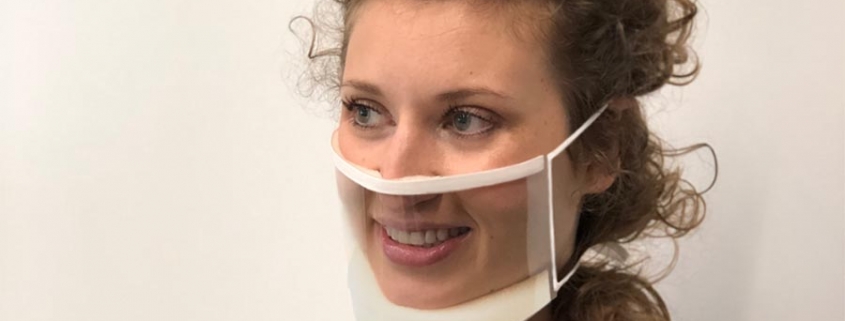Why everyone should be wearing clear face masks
As we head into the second year of the COVID-19 pandemic, there is hope on the horizon in the form of vaccines which are being pushed out in stages.
Even if we get a grip on the virus, the psychological toll the pandemic has taken might take years, if not decades, to ease.
Face masks will still be worn every day by many people, a weary public who are now all too familiar with how viruses and diseases are spread.
If masks are to become an everyday accessory, then there needs to be a push to make these face masks clear for the benefit of those people who are deaf or heard of hearing.
The problem with masks
Studies suggest that as much as 93% of our communication is non-verbal, so not being able to see someone’s face is a problem that most people don’t even know exists.
Building rapport or empathy is difficult when you can’t see someone’s face, things which are particularly important in a stressful situation, like, you know, being in the middle of a pandemic.
Reading other’s facial expressions is a part of our nature, built into our evolution and encoded into our DNA.
The problem with masks for the deaf and hard of hearing
On top of the general issue of obscuring facial expressions, masks also make life immeasurably harder for the deaf and hard of hearing.
Masks muffle voices, not only reducing the volume of words, but also their clarity, meaning conversations through a face mask are difficult even for those without hearing loss.
Usually, people with trouble hearing use facial expressions and lip-reading to fill in the gaps, but of course, having your face covered stops this.
This is why, moving forward, clear face masks should be the norm, rather than what we’re seeing today.
Lip reading is difficult at the best of times
If truth be told, even having a little window in a clear face mask isn’t a perfect solution.
Lip reading isn’t an exact science, and just seeing a small part of the mouth can help, but so much more is contained in the rest of the face.
If given the choice, deaf and hard of hearing people would rather see clear visors instead of clear face masks, making life so much easier in these extremely difficult times.
Improvement, but far to go
Back in May last year, a campaign was launched with charities writing to the government urging the use of clear face masks in health settings.
At first, nothing happened, but in September 2020, the Government announced that a quarter of a million clear face masks were to be delivered to frontline NHS staff and social care workers.
The goal was to help key workers communicate with people with certain conditions like hearing loss, autism and dementia.
The masks are see-through and have an anti-fogging barrier to ensure the face and mouth are always visible to help doctors, nurses and carers communicate better with their patients.
It is undoubtedly a big step forward, but looking ahead, it seems that everyday wearing of masks is going to continue for many years to come.
Only by making the public more aware of clear face masks and the reasons for their use can we change the attitude of the nation.




Leave a Reply
Want to join the discussion?Feel free to contribute!